A few days ago, I took a look at Major League Baseball’s “Minor League Problem” and if any of the suggestions Travis Sawchick put in his article “Do We Even Need Minor League Baseball?” could apply to the world of minor league hockey. Long story short, minor and junior hockey is fine the way it is and shouldn’t follow in Sawchick’s proposed footsteps, except maybe the expanding data collections part. If you want to read more in depth about the issue, take a look here.
However, when researching some of the factors surrounding Major League Baseball (MLB) and what makes it different than the National Hockey League, I found one very interesting area to take a look at: the stadiums themselves. Over the past few years baseball has seen a decline in attendance, while it seems hockey is filling just as many seats as ever. While it might be one of the last things to cross our own mind, re people staying away because they don’t like the stadiums themselves?
What’s Going On with Baseball Stadiums
No matter what the sport, every team wants to keep up with the Jones’s. Teams are always in competition to have the nicest stadium in a never-ending battle for gate receipts and curbside appeal. The Miami Marlins open up a billion dollar plus stadium and the Atlanta Braves go “hold my beer” and try to build a better one.

In Gabe Lacques’ article “Baseball’s future: Declining attendance – and shrinking stadiums to match,” he takes a look at the Oakland A’s proposed new stadium and how it tries to avoid the lagging attendance figures similar-sized ballparks are facing. In addition to stadium amenities, the new ballpark will feature great views of the San Francisco Bay Area. All aspects of the stadium aside from the game are going to have to look pretty, for lack of a better explanation. Why is that?
“The iPhone has ushered in a whole new era,” says Kaval. “We just found the fans wanted – younger fans, Millennials and Gen Zers – experiential things they can show on their Instagram, their Snapchat. Live sports are changing. Entertainment is changing.
Yep, they’re doing it for the ‘gram. They think people will more likely come spend hard-earned money on a ticket if they can take a picture and get maximum likes. Forget watching the ballgame in front of you, the real excitement is in the quest to be an influencer. Personally, I thought the notion was ridiculous, but then I remembered how many times I went to watch my New York Yankees play and how many people in the crowd were having an in-game photo shoot. There was also one elderly lady posing her hot dog with the field in background, so this social media frenzy is starting to spread across generations.
The NHL and Its Hockey Stadiums
While the NHL in major media markets has historically shared some of its venues with basketball franchises, many teams are making the push to build multipurpose arena, but with hockey as the main concern. The Prudential Center in Newark, New Jersey and Nationwide Arena in Columbus, Ohio are two perfect examples of the new wave of NHL arenas. While Little Caesars’ Arena in Detroit may technically be the NHL’s newest arena, it still shares it facilities with the Detroit Pistons, although it was built with the specific intention of replacing Joe Louis Arena for the Detroit Red Wings.
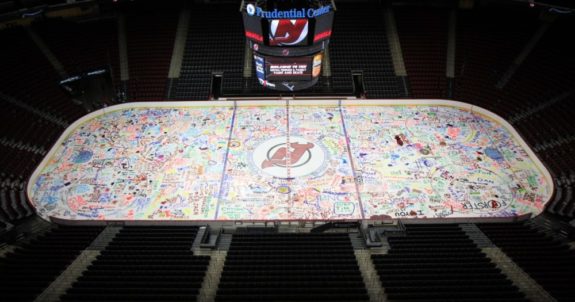
The general assumption in Lacques’ article is that better stadiums should drive attendance, right? The NHL has had the perfect case study with the New York Islanders. After years of sagging attendance in a dilapidated and rundown Nassau Veteran’s Memorial Colisseum, then-owner Charles Wang moved the team to Brooklyn’s Barclays Center, which was supposed to be an upgrade. Even worse attendance, an arena setup that’s unfriendly to the game of hockey and repeated disputes with the arena’s main tenant the Brooklyn Nets have made the Islanders’ tenure unsuccessful, although the team itself has begun to rebound.
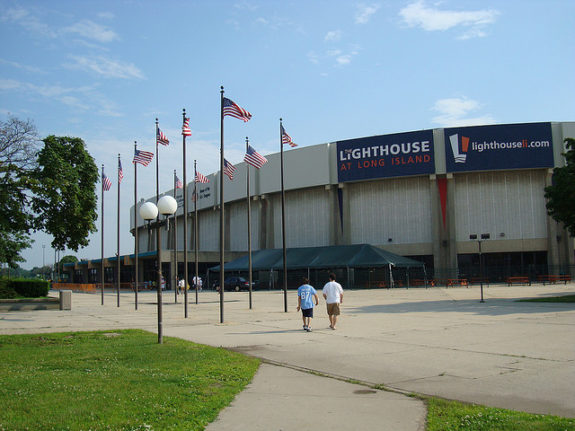
After extensive renovations, the team returned to their historic home, now referred to as NYCB Live, last season. Every game at the Coliseum, including the playoffs, were sell outs. Meanwhile, in Brooklyn, seats remained empty. With the NHL still unhappy with the Coliseum’s seating capacity – it ranks the smallest in the NHL – the team is going forward with plans to build a new arena in Belmont Park. While specific plans haven’t been announced, it’s hard to imagine the new arena would not follow in the footprint of the successful Prudential Center and Nationwide Arena. So the Nassau Coliseum debacle proves Lacques’ point right? If you build it, they will come? As long as it’s a brand new arena that looks pretty?
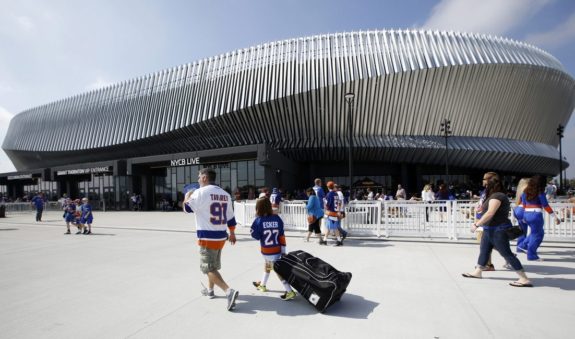
Hockey Fans Are Different
Hockey fans, which Christina Settimi called “The Tribe” in her 2015 Forbes article “The NHL’s Least Engaged Fans,” are a breed all their own. Settimi found that 80% of an NHL’s team’s revenue comes from local sources. Very simple explanation, the sport doesn’t rely on the national exposure that MLB relies on and the casual fans they bring.
It’s not hard to see, even while most of us consider ourselves “hockey fans,” there’s usually one team we devote most of our attention, and especially money towards. While MLB may need shiny new stadiums to distract a disengaged, casual fanbase, us hockey fans are more involved in the game itself. The main draw is what’s happening on the ice, not the location of the game itself. Even the Islanders’ own attendance problems the past few years can be mostly attributed to the move to Brooklyn, and away from their traditional fan base.
Hockey fans also rank as the highest earners among professional sports fans, which opens up a wave of possibilities for the NHL. Unlike baseball, the NHL doesn’t feel the need to drastically cut ticket prices to increase attendance. On the flip side, if a team opens a newer stadium with higher ticket prices, the average fan wouldn’t be as affected.
That doesn’t mean the NHL is turning a blind eye towards stadium amenities at all. The Maple Leafs recently announced the intention to make some stadium upgrades. Settimi’s article is a bit outdated, published in 2015, but she interviews Doug Warf, then-VP of marketing for the Carolina Hurricanes, who was excited about the then new offering of in-arena Wi-Fi:
“Fans expect a second screen experience for stats and replays,” said Warf. “But they also want to check in where they are on social media. It validates them, and it validates the team.”
For one last bit of analysis, compare the worst of Major League Baseball attendance to the worst of National Hockey League attendance, according to ESPN. This past baseball season, the lowest attendance in the league ranged between 10,000 and 20,000 a game (Miami averaged less than 10,000, but we can consider that an outlier). Meanwhile, hockey’s lowest-attended team was the Islanders. Mostly plagued by Barclays Center woes, the team still averaged over 12,000 fans a game for 78% capacity.
Simply put, an arena does not a fan make.
NHL Arena’s Are Fine…Well Most of Them
A more engaged fan base is one of the reasons that most NHL arenas are fine the way they sit. MLB’s new type of stadium movement is still fueled by a decline in attendance as they fight to find more ways to bring fans to the game itself. In addition, some stadiums were built with too many seats and need to be resized, such as in Jacques’ example of the Cleveland Indians’ Progressive Field. With NHL attendance stable, as well as most stadiums being in the same seating range, professional hockey seems fine for the foreseeable future.
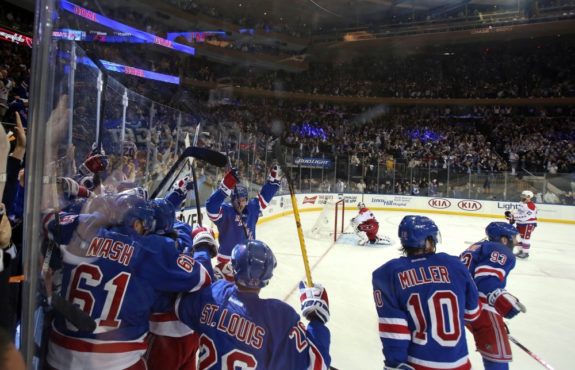
That’s not saying outdated arenas are immune for updating and replacement. For example, look at the NHL’s two oldest arenas: Madison Square Garden in New York and the Scotiabank Saddledome in Calgary. Madison Square Garden is constantly renovated to make it appear as if it was built yesterday. The Calgary Saddledome is vastly outdated and in a constant battle to be replaced.
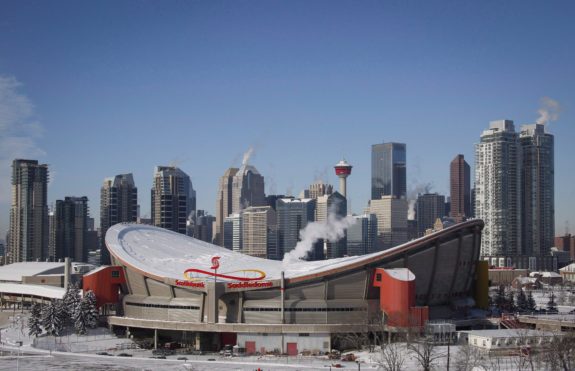
While the Calgary Flames and the city may be in a constant battle, fans haven’t turned their back on the team. According to ESPN’s estimates of last season’s attendance figures, Calgary was top 10 in attendance, filling over 95% of available seats. Then again, Calgary’s regular season success might have had just a bit to do with fan turnout.